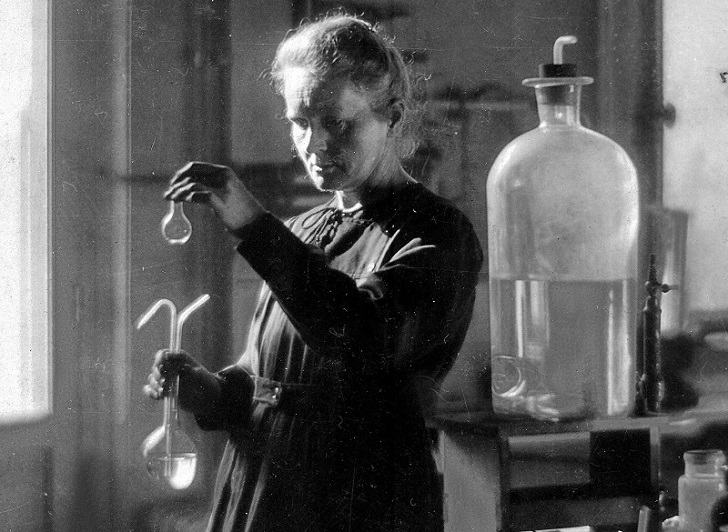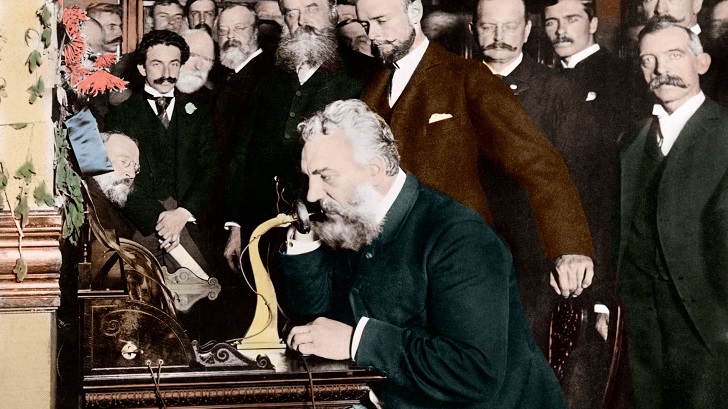
Exploring the Creative Side of Famous People

Have you ever wondered how geniuses such as Albert Einstein, Steve Jobs, and Marie Curie reached the highest success levels? Were they born with some extra intelligence, or was it something else? Recent research suggests that the secret behind the brilliance of these thinkers may have been their pastimes.
Hobbies can be crucial in unlocking certain parts of our creativity and helping us get closer to attaining greatness. Below are some hobbies pursued by many historical geniuses which could help you unlock your inner genius!

Grant Holt/ Wikkipedia | Together with her husband, Marie Curie was awarded half of the Nobel Prize for Physics in 1903,
Marie Curie and Her Love of Gardening
Marie Curie is renowned for her pioneering work in the field of science, particularly her groundbreaking research into radioactivity. Many people are not aware, however, of her love of gardening. It may seem like an unlikely passion for a brilliant physicist and chemist, but Curie took great pleasure in cultivating her garden.
She tended to various plants, including dahlias, anemones, and irises, and enjoyed the peacefulness and tranquility of being surrounded by nature. Some suggest that her love of gardening may have contributed to her success in science, as she experienced moments of inspiration and clarity while working outdoors. All in all, Curie’s dedication to both science and nature makes her a truly remarkable figure in history.

Getty Images/ Shutterstock | Steve Jobs wasn’t always a great success and had many failures throughout his life
Steve Jobs and His Enthusiasm for Calligraphy, Design, and Storytelling
Steve Jobs, the iconic co-founder of Apple, was a man of many passions. He was interested in creating groundbreaking technology and in the finer aspects of design, calligraphy, and storytelling. Jobs’ love for calligraphy was crucial in developing Macintosh’s typography. He believed that beautiful typefaces were essential to the success of the computer, which later became the industry standard.
Jobs’ design aesthetic was groundbreaking, and his focus on simplicity and elegance is still seen in Apple’s products today. Additionally, Jobs was a master storyteller, his famous “reality distortion field” was a product of his ability to inspire and motivate people. Jobs’ passion for these seemingly unrelated disciplines is a testament to his genius and belief that technology can also be beautiful.

BETTMANN / GETTY IMAGES | Bell started working on the harmonic telegraph in 1871
Alexander Graham Bell and His Interest in Speech Therapy and Teaching the Deaf
Alexander Graham Bell, known for his invention of the telephone, had a lesser-known interest in speech therapy and teaching the deaf. His mother and wife both suffered from hearing impairments, which sparked his curiosity and passion for finding ways to help those with hearing loss. Bell helped develop techniques for teaching lip-reading and speech to the deaf and even founded a school for the deaf in Boston.
His work in this field paved the way for advancements in hearing aids and speech therapy that still benefit those with hearing impairments today. Alexander Graham Bell’s legacy goes beyond the telephone and illustrates his dedication to improving the lives of others through innovation and education.
More in Leisure
-
`
How to Tell if a Bipolar Man Loves You – Key Signs and Indicators
Relationships, especially those involving someone with bipolar disorder, can be challenging but rewarding. The highs and lows characteristic of bipolar...
August 15, 2024 -
`
How to Prepare for All You Can Eat Sushi Buffets – Tips & Tricks
Are you ready to enjoy a sushi buffet and make the most out of your dining experience? If you’re a sushi...
August 9, 2024 -
`
How Does the Brain Play Into Mindset? The Power of the Mindset
How does the brain play into mindset? Within the brain lies the foundation of our mindset, shaping our perceptions and guiding...
August 3, 2024 -
`
How Often Should You Meditate to Achieve Your Goals
How often should you meditate to achieve its benefits? This question is often asked by those looking to incorporate this practice...
July 25, 2024 -
`
How to Be a Better Wife? 10 Essential Tips
Marriage is a beautiful journey, a tapestry woven with moments of joy, tenderness, and perhaps even a few snags along the...
July 19, 2024 -
`
The Best Quotes About Shadow Self You Need to Read
The journey of self-discovery is incomplete without acknowledging the parts of ourselves that lurk in the dark—the shadow self. “Owning Your...
July 12, 2024 -
`
How to Make Your Wife Happy and Strengthen Your Bond
You’ve probably heard the age-old advice, “Happy wife, happy life.” But what does it really mean to make your wife happy?...
July 5, 2024 -
`
Top 6 Best Beaches in Lake Tahoe You Should Not Miss
Lake Tahoe is a gem nestled in the Sierra Nevada mountains, boasting some of the most breathtaking beaches you will ever...
June 28, 2024 -
`
6 Practical Ways of Using Social Media Less & Be More Productive
In today’s digital age, knowing how to spend less time on social media is a game-changer. Social media, though engaging, can...
June 20, 2024















You must be logged in to post a comment Login